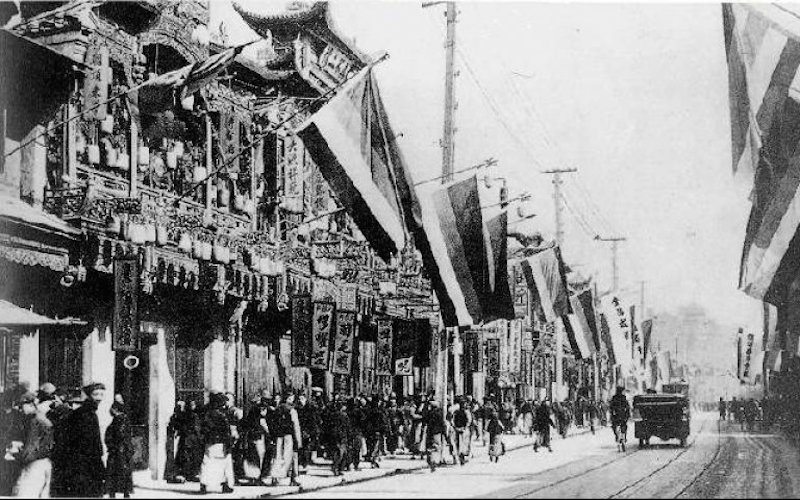The Xinhai Revolution, 1911 – 1912
The Xinhai Revolution is also called the 1911 Revolution or simply the Chinese Revolution. This widespread uprising officially ended the reign of the Qing Dynasty, thereby ending imperial rule in China. They replaced the Qing Dynasty with the Republic of China.
Prior to the revolution, Qing was facing severe pressures from outside forces, including loss of several cities and Qing Dynasty land. They lost Hong Kong in the Opium Wars against Western powers led by Great Britain, and some territory went to other countries after a defeat to Japan in the Sino-Japanese War in 1894 to 1895—losses included Taiwan and parts of Manchuria. Perhaps its greatest threat, however, was pushes from within for a more republican form of government to replace the imperial rule. Chinese living overseas, in particular, were supportive of this cause. The Qing Dynasty did attempt some reforms, but they seemed like they were insincere and poorly implemented—too little too late. Two Qing rulers died just days apart (one naturally, the other perhaps by poison), and the new ruler was a two-year-old boy supported by his politically-inexperienced father. It appears that when those two rulers died, the Qing Dynasty died with them.
Revolt began in 1911, and it may have started with a simple dispute over railroad ownership in Sichuan. A republic-focused army attacked Wuchang, Hubei province, and the rebellious spirit spread quickly. They also quickly took Nanjing, a former capital in the Ming Dynasty. It took just a few months for the nationals to begin to set up a new form of government. Representatives from the provinces met for the first national assembly, and they elected Dr. Sun Yat-Sen as their new provisional president for the Republic of China.
Expand your knowledge universe in just 5 minutes a day via bite-sized email courses.
Share with friends:

